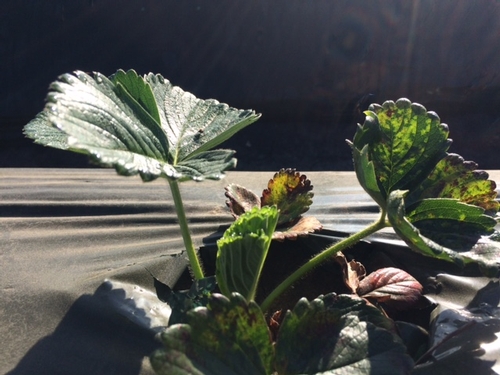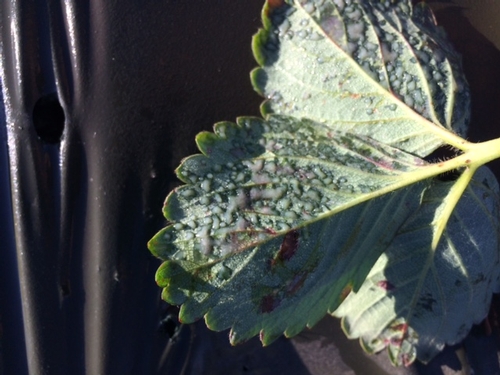Angular leaf spot (or as some insiders refer to it, "ALS") caused by the bacterial pathogen Xanthomonas fragariae, has been showing up a bit more than expected this year in several strawberry varieties, including Cabrillo and Petaluma.
I'd like to demonstrate several descriptions of this disease from the UC IPM guidelines for strawberry with pictures just taken this morning on a field of Cabrillo variety strawberry. Picture 1 shows the water soaked spots on the leaves which as a matter of fact when seen in the low angle of light in the early morning show the angular formation of infection bounded by the venation of the leaf. Further, picture 2 shows the viscous exudates (reminiscent of pus) matched to these areas on the underside of the leaf. These exudates tend to be moist and lustrous in the morning, and dry down to a more scaly appearance as the day progresses.
These exudates come from the breakdown of the plant cell walls that this pathogen engenders, and the exudates are of course also filled with Xanthomonas bacteria cells. Given the size and proliferation of these disease propagule filled exudates, it doesn't take much imagination to realize how easily it is to move disease around, especially via rain and overhead irrigation.
The Guidelines state that cool, moist days (think rain) followed by cold nights near freezing are what favor this disease, so hopefully by now we are through most of the woods on this issue for this year.
Attached Images:

